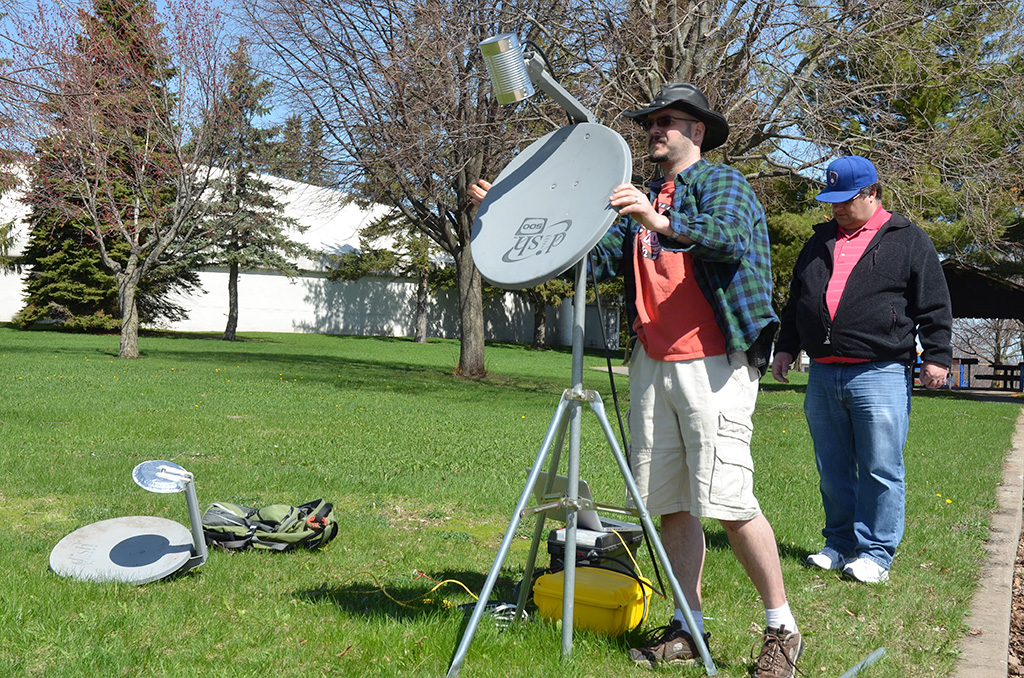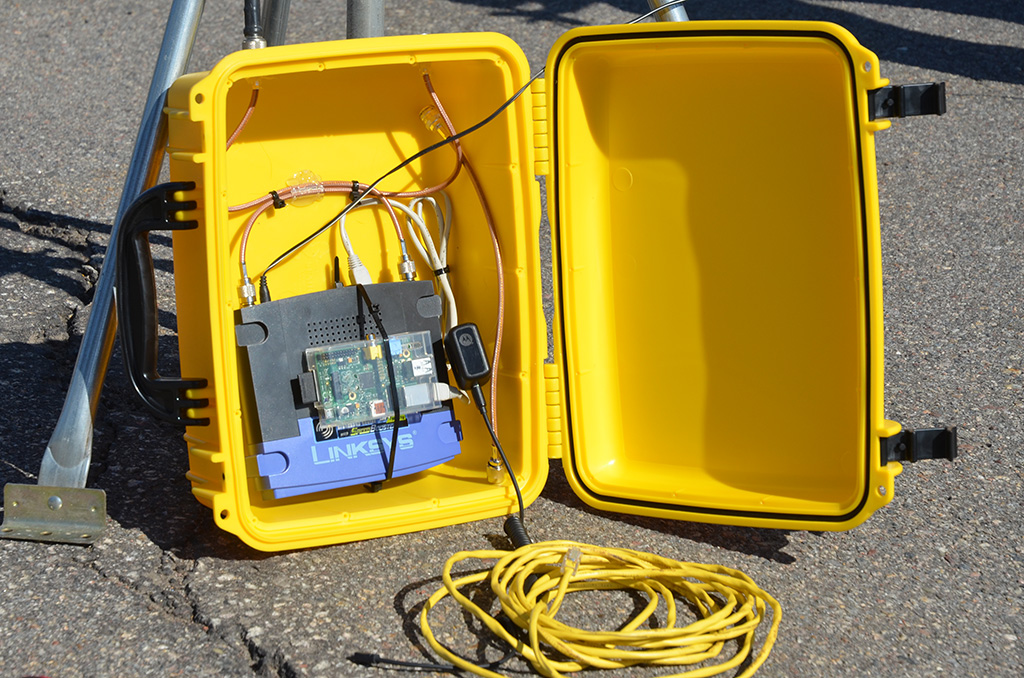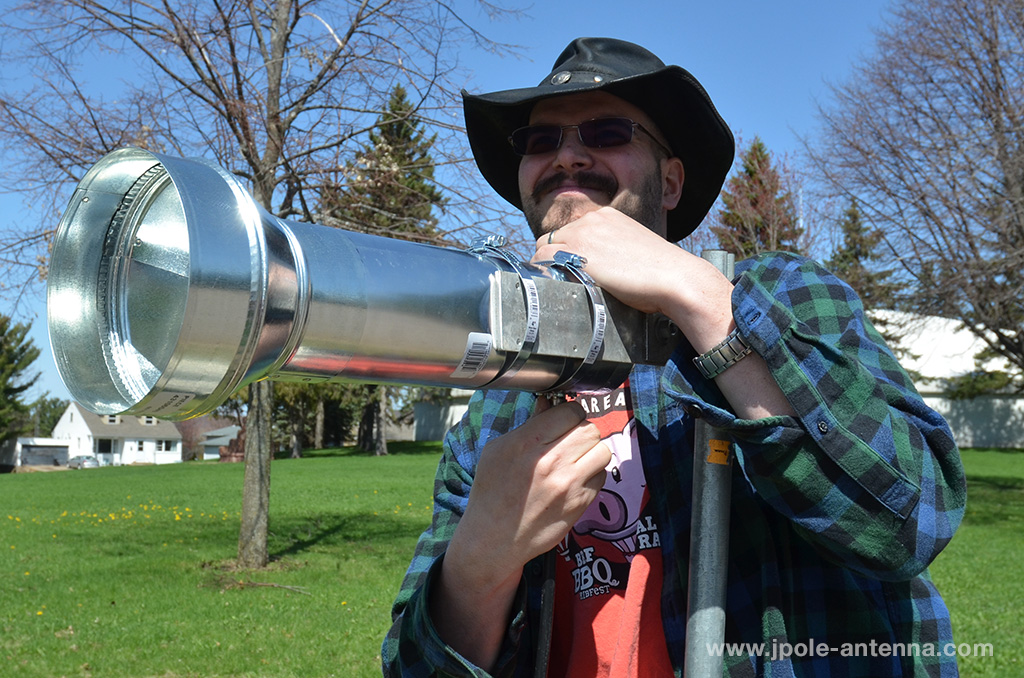 Broadband-Hamnet is a relatively new operating mode that uses off the shelf wireless network routers, along with a proprietary firmware, to build out an amateur radio high speed data network. This network, using 802.11.b/g technology can run just about any service or application that uses Internet Protocol (IP).
Broadband-Hamnet is a relatively new operating mode that uses off the shelf wireless network routers, along with a proprietary firmware, to build out an amateur radio high speed data network. This network, using 802.11.b/g technology can run just about any service or application that uses Internet Protocol (IP).
Recently WVRA club members, Mark N9MEA, Michael KB9VBR, and Travis W9HDG, installed the city’s first permament mesh network node. This node, located at the State Patrol HQ in Wausau consists of a Linksys WRT54GL router and a 16Dbm omnidirectional antenna mounted at about 30 feet in the air. The WI9WEM node gives us an opportunity to test mesh network performance from various locations and a starting point in building a full scale city-wide mesh network.
Continue reading to learn more about Broadband-hamnet, mesh networking and how to get started.
What can we use the mesh network for?
Just about anything that runs on the Internet can run on the mesh like web servers, ftp servers, print servers, email, voice chat, irc, webcams, and VOIP. While the mesh isn’t the Internet, we do have the ability to connect the mesh to the Internet for special need cases. We can also create VPN tunnels to connect our mesh to meshes in other communities.
The mesh is self discovering and configuring. As new nodes are brought online they are ‘discovered’ by the network and begin working to transfer data. If a node or link goes offline, the mesh will reroute traffic around the problem. This ad-hoc nature of mesh makes it easy to get online or to expand and contract the network as needed.
A bigger reason for building the mesh is for emergency communications. Imagine during a disaster to be able to provide VOIP phones linking shelter managers, incident command, and the EOC. Or during an event to deploy several portable nodes with IP cameras to relay high speed streaming video to net control or incident command. This is the type of technology that emergency managers are looking for and amateur radio will be able to provide a high speed wireless service without relying on existing infrastructure. That’s why Broadband-Hamnet won a National and Global award for Innovation from the International Association of Emergency Managers.
But is the mesh ham radio?
It most certainly is. Six of the channels in the 802.11b/g protocol reside in the 2.4 GHz amateur radio band. We can run our routers using FCC Part 97 rules which allows us to modify the equipment, add antennas, and increase power. The firmware in the router handles the mesh technology, so we can use our ham radio expertise to build microwave antennas and links. Playing around with the mesh is a great, affordable way to experiment with microwave technology.
How to I get on the mesh?
Getting online is easy, you will need the following:
Broadband-Hamnet compatible router. Check the BB-HN site for specific models, but the Linksys WRT-54GL is a great starter router and can be purchased for about $50. You will need to download the firmware from the Broadband-Hamnet site and flash your router with it.
A RP-TNC to N Female pigtail adapter. This will allow you to connect external antennas to your router.
Any length of low loss coax cable with N connectors. Shorter is always better at microwave freqs.
A 2.4 GHz antenna. Unless you are very close to another node, you will want a directional antenna. Most high gain directional antennas will run $50 – $100. But you can build the Waveguide Cantenna Antenna for about $15 in parts from Menards.
Does getting on the mesh sound exciting to you? Are you interested in building a permament node for your home or a portable mesh node to be used at events? Contact Michael, KB9VBR kb9vbr@yahoo.com for details on how you can join us with our mesh network experiments.




